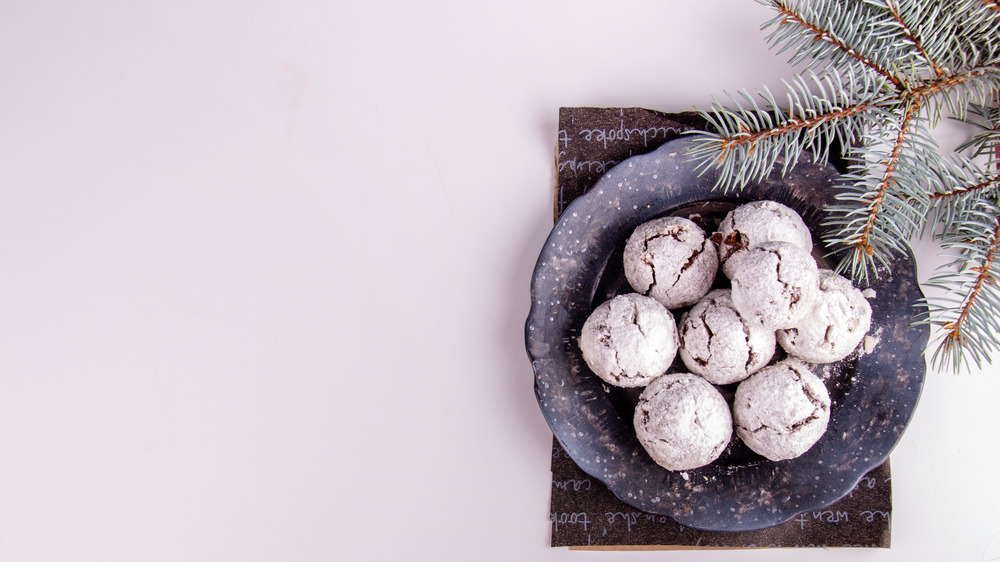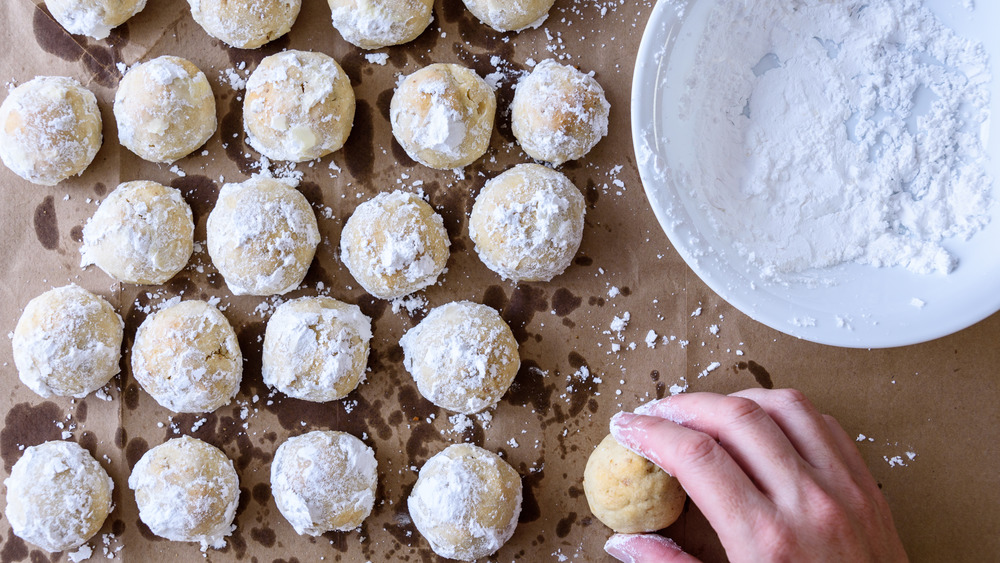What Are Mexican Wedding Cookies And What Do They Taste Like?
If baking cookies (or eating them) is a part of your holiday traditions, there's a good chance you've seen Mexican wedding cookies on your plate at some point over the years. But you may have called them Mexican wedding cakes, or possibly polvorones. Or snowballs. Or maybe even Russian tea cakes. That's because, according to the Los Angeles Times, this small, simple cookie goes by many a nom de plume.
Perhaps the reason so many cultures claim a version of Mexican wedding cookies is because the ingredient list is short and sweet: butter, powdered sugar, flour, vanilla, salt, and pecans (via Tastes of Lizzy T). And the method couldn't be more straightforward, according to the LA Times: cream butter and sugar, add flour and nuts, roll into fat balls, and bake. The crucial step comes after your cookies are done, however. While the cookies are still warm, roll them in powdered sugar, as in this recipe from Food52. This dusting of sugar makes the cookies look like snowballs, accounting for two more titles. (Polvo is Spanish for dust, hence "polvorones.")
Mexican wedding cookies go by many names
There are many variations on this simple recipe, of course. The New York Times has a version that is done entirely in a food processor, for example, making for a very easy cleanup. Epicurious uses cinnamon, the LA Times suggests a lime zest twist, and the Tastes of Lizzy T recipe even calls for tequila. But no matter what version you try, the end result should be a buttery, nutty cookie that melts in your mouth. (Speaking of "melts," don't be afraid to re-dust your cookies with more sugar, should the initial coating melt into the dough.)
So, what about all those names? Well, there is a history of these cookies being served during special occasions (like weddings) in Mexican culture, so that one makes sense. The LA Times indicates that the Russian moniker could be simply through an association with tea. And the list doesn't end there; these cookies are also known as pecan balls, Viennese almond crescents, sandies...but whatever you do, don't call them mantecados.

